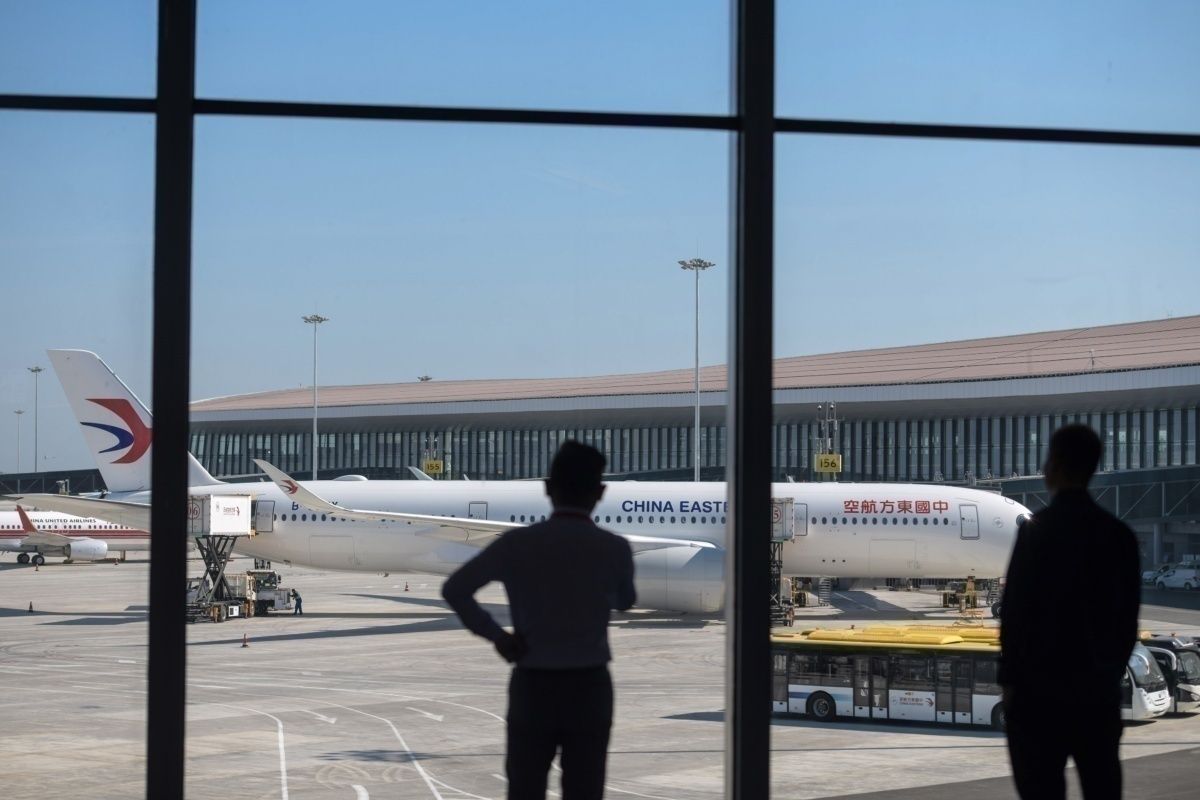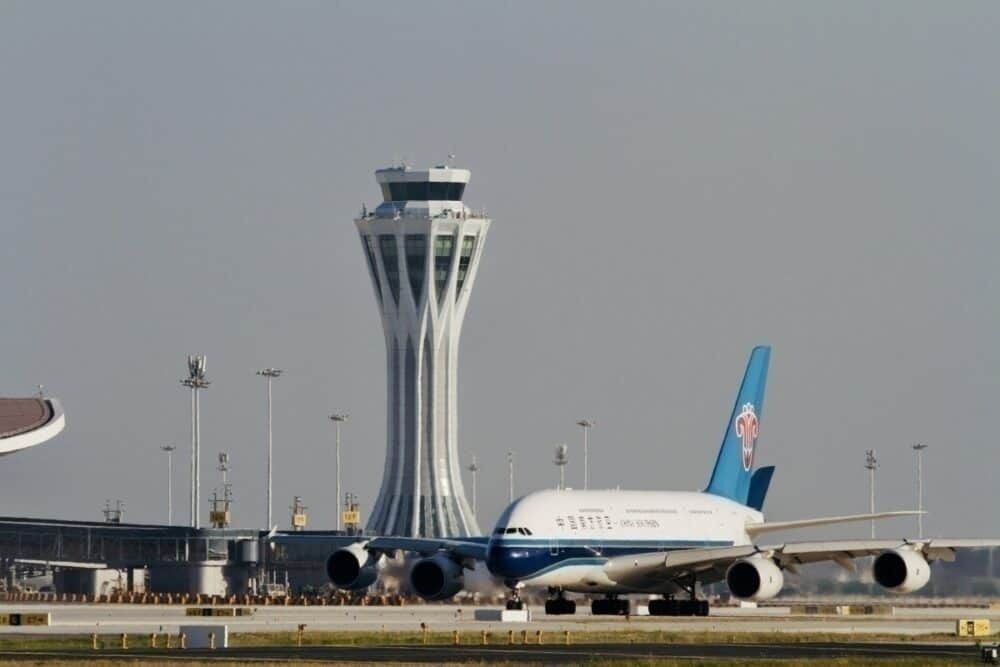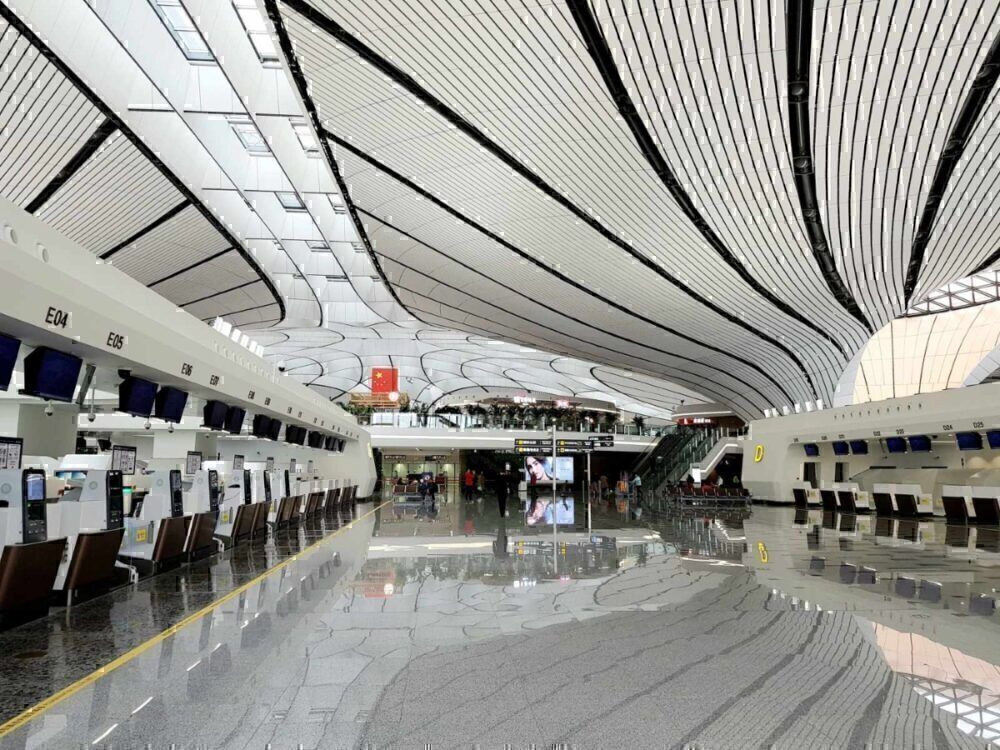It has taken just 12 months for Beijing's new Daxing International Airport to process ten million passengers. It comes despite a slump in airline activity in China earlier this year. But that ten million is just a warm-up act. The airport hopes to handle around 72 million passengers annually by the middle of this decade.
Daxing hits its stride despite a troubled year
Beijing's second international airport only opened 12 months ago. At 700,000 square meters, the starfish-like terminal is the biggest terminal building in the world. When the airport opened, Beijing was predicting some 170 million travelers into the city annually by 2025. The bulk would fly into the existing Beijing Capital International Airport. But Daxing got built to take some pressure off Beijing Capital and to help spread the load.
Events have unfolded somewhat differently this year, probably curbing those projections a bit. But despite aviation activity remaining subdued elsewhere, domestic airline movements in China are back to 2019 levels. That means there will be plenty of airline and passenger traffic continuing to pass through Daxing.
Stay informed: Sign up for our daily aviation news digest.
Airlines make the switch to Daxing
As soon as Daxing opened, China Southern Airlines transferred 80% of its Beijing flights there. From the get-go, 15 airlines moved some or all of their Beijing operations out to Daxing, including seven local carriers. At the start, the airport was expecting 280 flights a day. Daxing Airport also predicted this to ramp up quickly.
By mid-decade, China Southern plans to run 200 planes a day through the airport, carrying nearly 29 million passengers. More recently, other Chinese airlines have transferred extra flights out to Daxing. China Eastern Airlines is in the process of moving 40 more flights from Beijing National to Daxing. To date, Daxing has handled 84,000 flights and now serves 129 destinations in China alone.
Several international carriers have also made the switch from Beijing National to Daxing Airport. British Airways was the first airline to do so. Soon after, airlines such as Delta, LOT Polish, and Russia's S7 made Daxing their new Beijing home. More recently, Swiss and Etihad have made a move. At the time, an Etihad spokesperson said the switch to Daxing "reinforces our commitment to the China market and our Chinese guests, and contributes to the promising bilateral relationship."
While passenger traffic gets the attention, the airport is also slowly making inroads with cargo. Daxing got its first cargo route in June. An inaugural SF Airlines flight came in from Hangzhou, reportedly carrying waxberries. By 2025, Daxing hopes to be handling two million tonnes of cargo annually. As part of the US$11 billion airport build cost, 24 cargo stands were constructed.
Capacity in China is normalizing, but are loads?
While it hasn't necessarily been a smooth ride for Daxing this year, aviation in China is starting to normalize. While many international airlines remain cautious about returning there, local carriers are rapidly adding capacity on domestic routes.
According to OAG's Frequency and Capacity Statistics for September 2020, seat capacity in China is up 8% compared to September 2019. In contrast, seat capacity in the United States was down 48%. Beijing National and Guangzhou are now dueling it out for the world's busiest airport trophy, ableit off a low base.
Of course, a raw capacity statistic doesn't tell us much about the all-important seat utilization and revenue numbers, and passenger traffic through key Chinese airports is substantially down. But the OAG data does tell us planes are taking to the skies in China, even if lightly loaded.
It makes the immediate outlook for Daxing mixed. They might be getting the flights, but are they getting the passengers?



